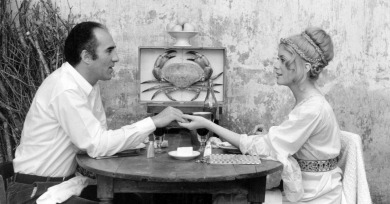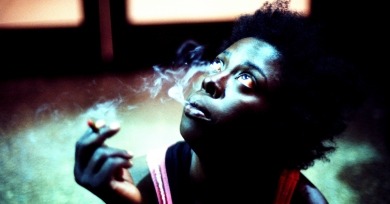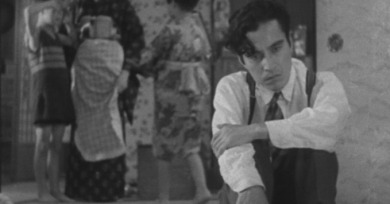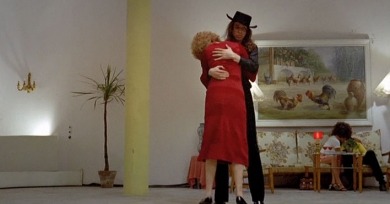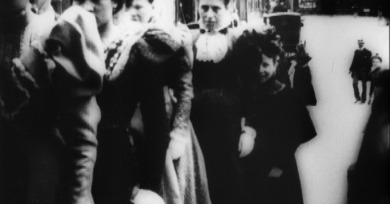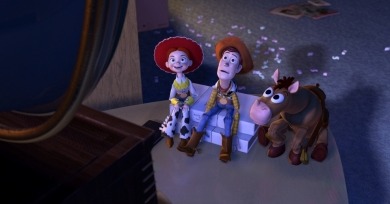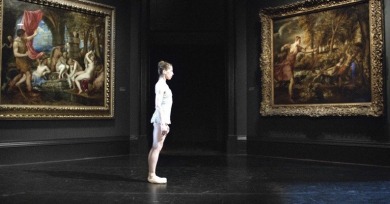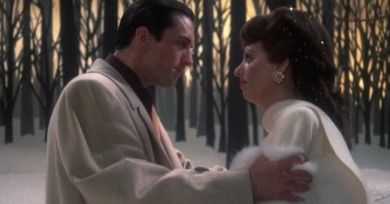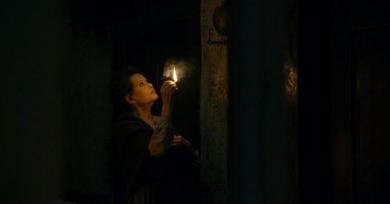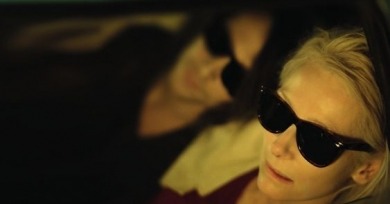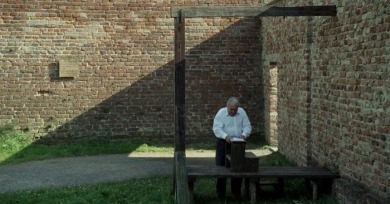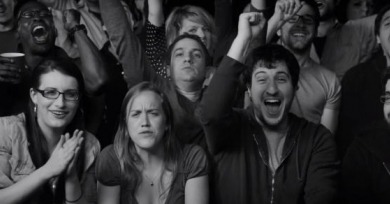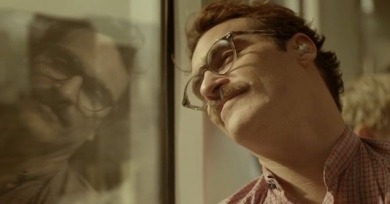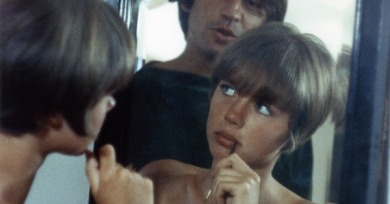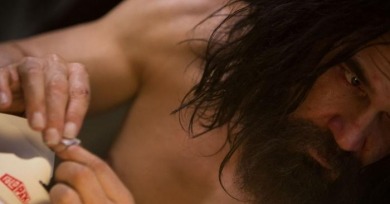Max Nelson
Seno has said that Nervous Translation emerged from her memories of growing up a reluctant child of the Philippine diaspora.
The Creatures makes sense primarily as a kind of bitter, exaggerated parody. In its vision of male-female relations, it comes off as a grotesque embellishment of the French science-fiction movies it followed and a warning to the ones it preceded.
No loitering scene can ever be truly fictional. Whatever other purpose they serve, these spontaneous street portraits are primarily about how people carry themselves, their postures and speech patterns, their ways of ambling and reclining, and the textures of the environments in which they move.
Some influential benshi went so far as to exercise a kind of final cut over the films they narrated, manually snipping out scenes, changing projection speeds, or asking that the studio rearrange sequences to suit their needs.
Beware of a Holy Whore was shot in the boxy 1.33:1 aspect ratio standard, at the time, to the 4:3 frame of most TV displays, and it’s striking to see how many bodies Fassbinder manages to squeeze shot-by-shot into the somewhat awkward dimensions of the frame.
The Guests is a sort of cinematic equivalent of a literary explication de texte—an exercise in which a single, brief work is made to expand, undulate, deepen, and shift shape simply by virtue of being looked at unblinkingly and at length.
How, these movies ask, might we come off in the eyes of the animals, objects, and fictional creatures in our lives? And how far can we go reconstructing our own lives—political, romantic, social, religious—by analogy with those of animals and toys?
It is, I think, this impulse to account for the form of finished objects—to think through the circumstances under which they were made, the material limitations of their production, and the needs they were created to fill—that leads Wiseman to take the interest he does in the day-to-day business of institutional administration.
It’s certainly a delicate movie, filled with pockets of open space and set to an unhurried, loping rhythm. Yet there’s something deeply ambiguous about Life of Riley’s simplicity. It’s the radical sort of simplicity reminiscent of the late output of so many great artists . . .
It’s worth wondering, since the protagonists of certain musicals seem to share Jimmy’s dream of establishing this perfect balance, whether the musical, too, is somewhat allergic to the idea of marriage as a sustained habit of life rather than as a grand romantic finale.
Jealousy’s 77 whittled-down minutes play less like a single, continuous narrative than a series of isolated incidents, each enclosed by its own set of borders and calibrated to its own private sense of time.
It has become obligatory to talk about each new Manoel de Oliveira film by observing how remarkable it is that there is a new Manoel de Oliveira film.
Jim Jarmusch’s films have a knack for catering to (and implicitly confirming) the tastes of their ideal viewers: the record collectors crate-digging for that near-mint promo copy of Rain Dogs; the aging punks jostling for a front-row spot at a Stooges show; the adventurous indie kids braving a doom metal set.
Awesome Show is the ideal work of art for a cultural moment in which cult appeal is manufactured rather than earned over time.
Arnaud Desplechin’s Jimmy P is a curious case: a scrupulously faithful adaptation that toes a narrow, wobbly line between honoring and subverting traditional therapy’s reliance on the spoken word.
Claude Lanzmann, the most intractable and demanding of modern filmmakers, has spent his career hammering out two iron-clad, seemingly unresolvable principles: a) memory, in any really meaningful sense of the word, is close to impossible, and b) memory is completely, indisputably necessary.
Certain elements of Visitors suggest that Reggio has grown closer in spirit since Koyaanisqatsi to the wide-eyed young stoners who helped catalyze that film’s success.
With Her, his fourth feature, Spike Jonze has made a movie so unambiguously, pointedly about The Way We Live Now that we might wonder if it could speak to any moment other than Now.
The four films that Eric Rohmer made with cinematographer Nestor Almendros between 1967 and 1972 are the major works of the director’s Six Moral Tales.
Only so much can be done with the source material for Spike Lee’s new film. Repellent and deeply stupid, Park Chan-Wook’s decade-old revenge thriller Oldboy is too high on its own bad-boy attitude to be genuinely shocking, and too mean-spirited and bullying toward its audience to be truly enjoyable.

